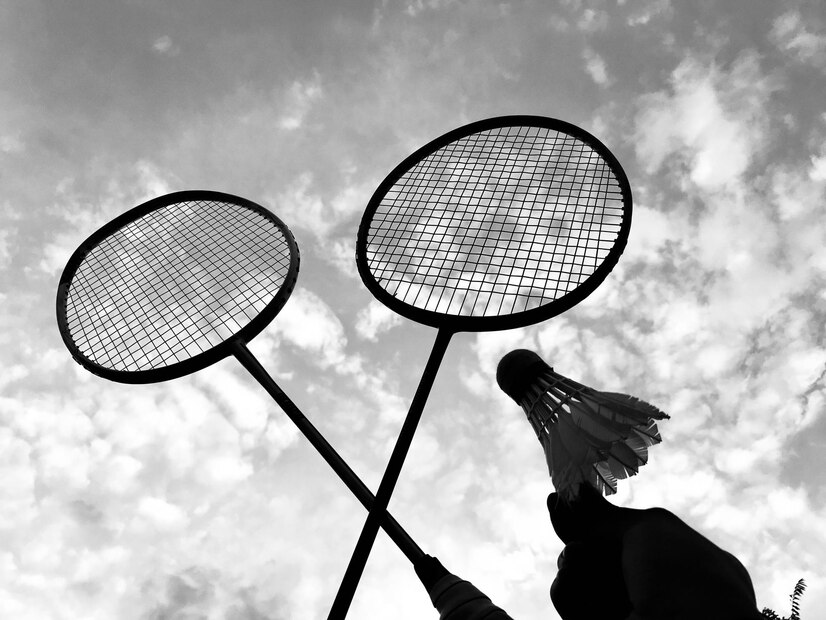The history of badminton brings us all the way back to the mid-18th century.
The game of badminton started to become popular in India at a small town called Poona.
When India was still a British Colony badminton was played mostly by the British military officers.
At this point, Badminton was just a game played for fun, and it was known as “battledore and shuttlecock” in British India instead of Badminton.
Today, badminton is considered as the FASTEST RACKET SPORT.
It started with wooden rackets then in the 70’s they made aluminum rackets and now we are using high module graphite rackets which are more durable and shock absorbent. And light weight also.
There are many options in rackets these days for example light weight to heavy weight then head light, head heavy and even balanced rackets. There are different grip sizes that are also available for different types of hands. And the tension the racket can hold upto 35 lbs which is enormous compared to olden days.
These rackets give you better power, better control and better in everything.
The shuttlecocks travel faster as compared to the olden days.
A shuttle weighs between 4.74 and 5.50 grams. The highest quality shuttles have a natural cork base covered by thin leather, and 16 goose feathers from the bird’s left wing that are held together with thread and glue. And there are different types of speed of shuttles for different levels.
Badminton at the top level is extremely physically demanding, requiring strength endurance, muscular power, agility, speed endurance, anaerobic power and a capacity to accelerate / decelerate.
In the 60’s rallies were shorter and over the period of time as the players worked on their physical aspect with the help of sports science (which continues to evolve) like stamina, strength and speed the rallies grew longer and longer and now longest rallies consist more that 100 strokes in one rally! Phew!
If we look at the strength aspect of the game, tan boon Heong from Malaysia holds a guinness
book world record of fastest hit in the world that is 493 km/hr. With the help of sports science players are also evolving and reaching new heights these days.
Nowadays players are more offensive and their shots are more precise. Besides this, players also have the ability to dive and defend smashes.
Badminton players are much more athletic and agile.
Deception also became an important element in winning badminton rallies.
Badminton players are also working on their mind, nutrition, and recovery with the help of professionals to play at their best.
The International Badminton Federation (IBF) (now known as Badminton World Federation) was established in 1934 with Canada, Denmark, England, France, the Netherlands, Ireland, New Zealand, Scotland, and Wales as its founding members. India joined as an affiliate in 1936. The BWF now governs international badminton and develops the sport globally.
Since 1992, badminton has been an Olympic sport with five events: men’s and women’s singles, men’s and women’s doubles, and mixed doubles, in which each pair is a man and a woman. At high levels of play, the sport demands excellent fitness: players require aerobic stamina, agility, strength, speed, and precision. It is also a technical sport, requiring good motor coordination and the development of sophisticated racket movements.
Badminton is extremely popular in Asia with 15,000 spectators seen at finals of major badminton matches in Indonesia and Malaysia.
Few years back BWF also introduced the Instant Review System which is the graphical system predicting whether the shuttle is in or out, which provides information to the referee to decide.
So, these are few then and now facts about badminton. But as science and technology keeps evolving, badminton as a sport will also evolve with time.



